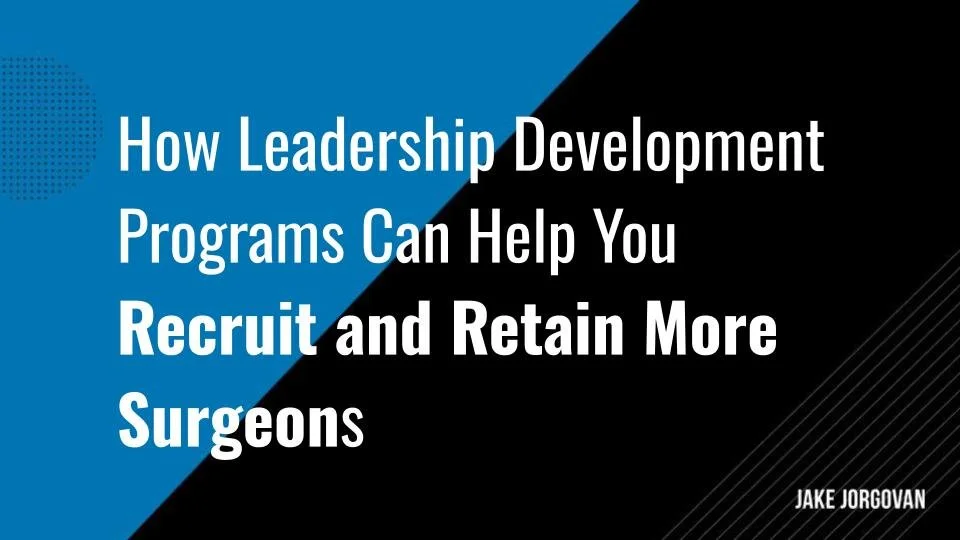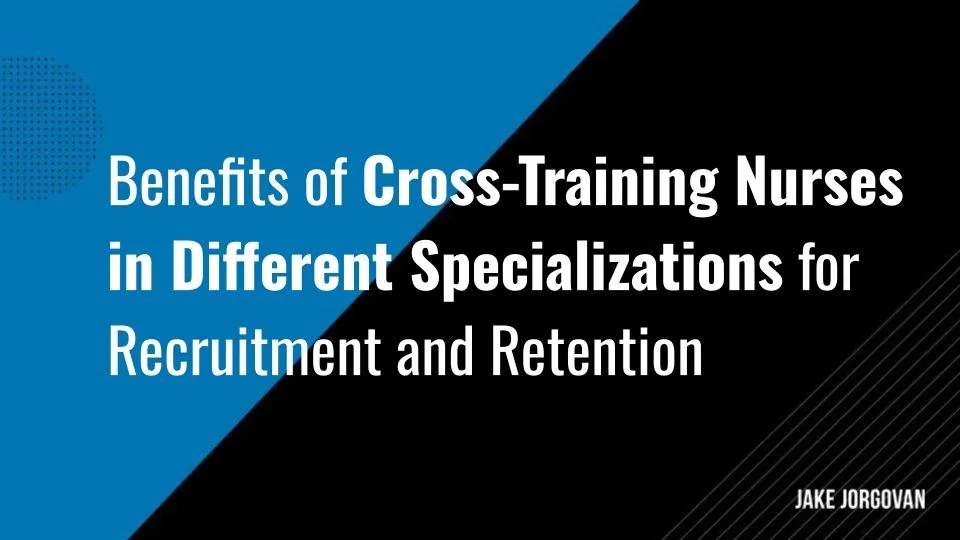How to Partner with Nursing Schools to Develop a Steady Pipeline of New Nurses
Building a sustainable nursing workforce is no easy task. Hospitals and healthcare facilities face pressing challenges in finding and retaining qualified nurses.
Aging workforce and impending retirements
Rising demand for nurses amid an evolving healthcare system
Limited clinical placements and training opportunities
To address these issues, building a reliable pipeline of new nurses through academic-practice partnerships is increasingly important
In this article, we’ll explore effective partnership strategies and innovative methods to create a strong nursing workforce.
Let’s dive in.
Establishing the Partnership Framework Between Nurses and Hospitals
Forming official agreements between healthcare facilities and nursing schools hinges on defining mutual benefits and shared goals.
These partnerships focus on tailored training programs that directly respond to the specific needs of healthcare facilities, ensuring a steady flow of competent, job-ready nurses.
Aligning partnership goals with healthcare delivery improvements is a strategic imperative under healthcare reforms such as the Affordable Care Act.
Here’s why:
Regulatory compliance: Partnerships ensure training programs meet healthcare regulations, which emphasize quality care and patient safety.
Improved healthcare outcomes: Collaboratively developed curricula aim to equip nurses with the skills to handle complex patient needs effectively, enhancing overall health outcomes.
Cost efficiency: By focusing on preventive care and efficient management of chronic diseases, partnerships can reduce hospital readmissions and associated costs, aligning with reform goals.
Workforce readiness: Direct alignment with healthcare improvements ensures that the curriculum remains relevant and graduates are prepared to meet current healthcare demands.
These aligned goals foster a proactive approach to nursing education, ensuring that future nurses are integral to advancing healthcare objectives.
Pro Tip: Working with headhunters can further enhance these partnerships. Most top nurse practitioner recruiters have established connections within nursing schools, enabling them to identify promising talent early and streamline pathways into critical nursing roles within healthcare organizations.
Cross-Disciplinary Approaches for Advancing Nursing and Healthcare
Integrating nursing education with other disciplines like engineering and business is reshaping healthcare solutions.
For instance, collaborations with engineering can lead to the development of innovative medical devices or improvements in patient care technology.
Business partnerships might focus on healthcare management, teaching nurses strategic planning and operational efficiency.
These interdisciplinary approaches not only broaden the scope of nursing practice but also enhance problem-solving skills in real-world healthcare settings, preparing nurses to lead and innovate within their fields.
Innovation in nursing education equips students with the skills to meet complex, real-world healthcare challenges.
Key benefits include:
1. Adaptive learning
Programs that incorporate technology and simulations allow students to handle diverse clinical scenarios, fostering critical decision-making under pressure.
2. Interdisciplinary collaboration
Exposure to fields like informatics, psychology, and public health prepares nurses to operate within multidisciplinary teams, improving patient outcomes.
3. Emphasis on data-driven care
Training in data analysis enables nurses to leverage patient data for better diagnostics, prevention, and personalized care strategies.
4. Continuous improvement
Programs with a focus on innovation encourage students to think beyond traditional methods, empowering them to drive ongoing improvements in healthcare delivery.
By combining interdisciplinary approaches with efforts to recruit nurses of different ages, nursing education and practice become more adaptable and resilient, ensuring that diverse perspectives contribute to enhanced patient care and healthcare innovation.
Clinical and Community Engagement
Maximizing clinical placements and real-world training through strategic approaches strengthens nursing education.
Key strategies include:
Mobile health clinics: Deploy mobile clinics to underserved areas, offering students hands-on experience in primary care, public health, and crisis management.
Community-based projects: Engage students in health initiatives that address local needs, such as wellness programs, disease prevention, and health screenings, building community trust and improving access to care.
Rotational placements: Design placements across diverse settings—urban, rural, specialized clinics—giving students a comprehensive view of healthcare challenges and patient demographics.
Extended clinical hours: Increase practical hours with flexible scheduling, allowing students to gain deeper insights into patient management and care continuity.
Telehealth training: Incorporate telemedicine modules, preparing students to adapt to remote care and expanding access in a tech-driven healthcare environment.
These targeted methods ensure nursing students are fully prepared for the dynamic needs of clinical practice.
Pro tip: Leverage partnerships with local public health offices to integrate nursing students in ongoing community health initiatives. This exposure not only broadens their practical skills but also ingrains a robust understanding of public health dynamics, enhancing their adaptability in various healthcare roles.
Clinical and community engagements offer meaningful benefits for both nursing students and the communities they serve. They usually include:
Enhanced practical skills
Students gain experience in diverse clinical situations, preparing them for real-world healthcare with confidence and adaptability.
Broader understanding of public health needs
Community placements deepen students’ insights into social determinants of health, helping them connect clinical skills with broader health impacts.
Improved access to care
Community projects and mobile clinics extend healthcare services to underserved populations, addressing care gaps and fostering local trust in healthcare systems.
Development of cultural competency
Working within varied communities teaches students to respect and adapt to cultural differences, a skill that improves patient interactions and care outcomes.
Strengthened patient-centered focus
Engaging with communities encourages students to prioritize patient experience and empowerment, aligning future care practices with patient needs.
These engagements build a workforce ready to serve diverse populations with empathy and effectiveness.
The Value of Faculty and Practitioner Involvement
Nursing faculty provide academic grounding, guiding students through theoretical concepts. Healthcare practitioners bring real-world expertise, enriching learning with practical scenarios.
Their combined roles in mentoring, supervising clinical experiences, and assessing competency ensure students transition smoothly from academic settings to professional practice, bridging the gap between theory and application.
Direct engagement from healthcare practitioners in nursing education brings substantial benefits.
Practitioners introduce up-to-date practices and technologies, giving students a relevant, hands-on understanding of today’s clinical environment.
Practitioners challenge students with real-world scenarios, fostering the critical decision-making skills required in complex patient care.
Through mentorship, practitioners open doors to professional networks, providing students with insights into potential career paths and opportunities.
Practitioners model patient interaction and empathy, helping students develop skills to manage patient relationships effectively.
By aligning teaching approaches with the unique attributes of various nursing talent personas, these benefits equip nursing students with both the skills and confidence to excel in healthcare settings.
Sustainability and Long-Term Goals
Sustainability in partnerships hinges on continuous evaluation and strategic adaptation.
This approach ensures programs evolve with healthcare advancements and educational needs, maintaining relevance and effectiveness in preparing a capable nursing workforce to meet future healthcare demands.
Future perspectives for partnerships between nursing schools and healthcare facilities highlight adaptable, forward-thinking approaches:
Incorporation of advanced technologies: Partnering to integrate AI, telemedicine, and robotics into curricula prepares future nurses for tech-driven care, enhancing patient outcomes and efficiency.
Expanded interdisciplinary collaboration: Partnerships could involve more departments like pharmacology, informatics, and public health, equipping nurses to tackle multifaceted healthcare challenges.
Community-centric health initiatives: Future programs might focus on localized healthcare needs, training nurses in specific community care areas like rural health, aging populations, or chronic disease management.
Flexible clinical education models: Evolving to include hybrid models with virtual simulations and remote patient monitoring offers more diverse training experiences, aligning with modern healthcare demands.
Focus on preventive care training: Emphasizing preventive care education within partnerships supports a proactive healthcare model, readying nurses to play active roles in population health management.
These evolving approaches ensure that nursing education remains relevant and adaptive to the future of healthcare.
Case Studies and Success Stories
Here are some successful case studies and success stories highlighting partnerships between healthcare facilities and nursing schools:
University of Pennsylvania Partnership: A partnership between a nursing school and a large-scale urban hospital focused on healthcare education, practice, and research. This collaboration was instrumental in enhancing patient care outcomes and streamlining the integration of academic research into clinical practice.
COVID-19 Call Center Initiative: During the COVID-19 pandemic, a partnership formed between a School of Nursing (SON) and a children’s hospital established a COVID-19 Call Center. This initiative helped to alleviate the burden on healthcare systems by providing timely and professional responses to community concerns, improving patient care and outcomes.
Hospital-Community Partnerships: Across the United States, various hospital-community partnerships have successfully addressed community health needs. These collaborations have focused on chronic disease management, healthcare access, and preventive health practices, significantly improving community health and healthcare delivery.
Mercy Hospital Ardmore and Murray State College Partnership: This initiative transformed unused hospital space into educational facilities, creating an integrated learning environment that directly addressed local nursing shortages. The partnership, known as "Murray at Mercy", facilitated a full-time, two-year nursing program, substantially improving graduate availability for local healthcare needs.
These case studies demonstrate the substantial impact that strategic partnerships between healthcare facilities and nursing schools can have on improving healthcare access, education, and patient outcomes.
Building Tomorrow's Healthcare: Strategic Partnerships Between Nursing Schools and Hospitals
Partnering with nursing schools is a proactive solution to address the nurse shortage.
It aligns educational goals with healthcare delivery, fostering a skilled and ready workforce.
These partnerships bring innovative training, real-world experience, and community engagement, preparing students for today’s complex healthcare needs.
Together, healthcare facilities and nursing schools can ensure a steady, skilled pipeline of nurses, improving patient care and operational stability.
Start building or strengthening these partnerships now to meet future demands with a reliable, well-prepared workforce.

























